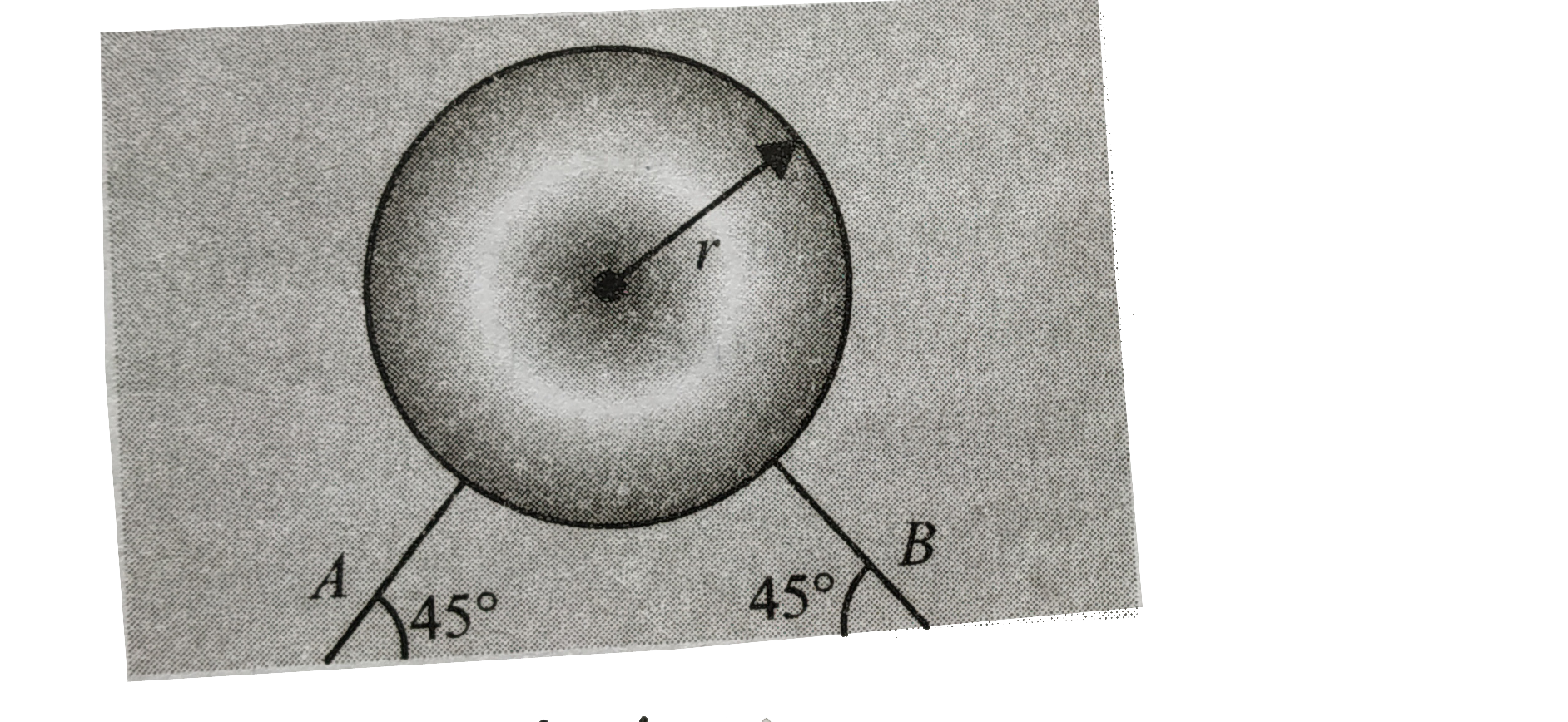A cylinder of height 30 cm and radius 7 cm is immersed completely in a fluid of density 1.3×103kg/m3. What is the buoyant force acting on it? [Take g = 10 m/s2]
To find the buoyant force acting on a cylinder immersed in a fluid, we can use Archimedes' principle, which states that the buoyant force is equal to the weight of the fluid displaced by the object.
1. Identify the dimensions of the cylinder:
- Height (h) = 30 cm = 0.30 m (convert to meters)
- Radius (r) = 7 cm = 0.07 m (convert to meters)
2. Calculate the volume of the cylinder (V):
The formula for the volume of a cylinder is given by:
V=πr2h
Substituting the values:
V=π(0.07)2(0.30)
V=π(0.0049)(0.30)
V≈3.14×0.0049×0.30≈0.0046m3
3. Calculate the weight of the fluid displaced:
The weight of the fluid displaced (which is equal to the buoyant force) can be calculated using the formula:
Buoyant Force(Fb)=Density of fluid(ρ)×V×g
Given:
- Density of fluid (ρ) = 1.3×103kg/m3
- g=10m/s2
Substituting the values:
Fb=(1.3×103)×(0.0046)×(10)
Fb=1.3×103×0.046
Fb≈60N
4. Final Result:
The buoyant force acting on the cylinder is approximately 60 Newtons.
- Height (h) = 30 cm = 0.30 m (convert to meters)
- Radius (r) = 7 cm = 0.07 m (convert to meters)
The formula for the volume of a cylinder is given by:
V=πr2h
Substituting the values:
V=π(0.07)2(0.30)
V=π(0.0049)(0.30)
V≈3.14×0.0049×0.30≈0.0046m3
The weight of the fluid displaced (which is equal to the buoyant force) can be calculated using the formula:
Buoyant Force(Fb)=Density of fluid(ρ)×V×g
Given:
- Density of fluid (ρ) = 1.3×103kg/m3
- g=10m/s2
Fb=(1.3×103)×(0.0046)×(10)
Fb=1.3×103×0.046
Fb≈60N
The buoyant force acting on the cylinder is approximately 60 Newtons.
Topper's Solved these Questions
- BOOK - AAKASH INSTITUTE ENGLISHCHAPTER - MECHANICAL PROPERTIES OF FLUIDSEXERCISE - TRY YOURSELF41videos
MECHANICAL PROPERTIES OF FLUIDS
- BOOK - AAKASH INSTITUTE ENGLISHCHAPTER - MECHANICAL PROPERTIES OF FLUIDSEXERCISE - SECTION - A50videos
MECHANICAL PROPERTIES OF FLUIDS
- BOOK - AAKASH INSTITUTE ENGLISHCHAPTER - MAGNETISM AND MATTER EXERCISE - ASSIGNMENT (SECTION D)26videos
MAGNETISM AND MATTER
- BOOK - AAKASH INSTITUTE ENGLISHCHAPTER - MECHANICAL PROPERTIES OF SOLIDSEXERCISE - Assignment(Section-D)14videos
MECHANICAL PROPERTIES OF SOLIDS
Similar Questions
A solid of volume 5 m3 is immersed completely in a fluid of density 0.5 kg m−3. What is the buoyant force acting on it? [Take g = 10 m/s2]
View SolutionThe density of iron is 7.8×103kg m−3 What is its relative density?
View SolutionA metal cube of edge 5 cm and density 9.0cm−3 is suspended by a thread so as to be completely immersed in a liquid of density 1.2gcm−3. Find the tension in thread. (Take g=10ms−2)
View SolutionA solid ball of mass 5 kg occupies a volume of 240 cm3. How much will it weigh when immersed completely in a fluid of dnesity 2.7×103 kg m−3?
Hint : Apparent weight = Actual weight - Buoyant forceView Solution(a). A cube of side 5 cm is immersed in water and then in saturated salt solution. In which case will it experience a greater buoyant force. If each side of the cube is reduced to 4 cm and then immersed in water, what will be the effect on the buoyant force experienced by the cube as compared to the first case for water. Given reason for each case.
(b). A ball weghing 4 kg of density 4000 kg/m3 is completely immersed in water of density 103kg/m3 find the force of buoyancy on it. (given g=10m/s2)View SolutionA vessel of base area 100cm×60cm and height 200cm is completely filled with a liquid of density 1.1×103kgm−3.
(a) Ignoring the atmospheric pressure, find :
(i) the thrust at the bottom of the vessel,
(ii) the pressure at the bottom of the vessel,
(iii) The pressure at a depth of 5 cm from the free surface,
(iv) the net force experienced by a metal foil of area 10cm2 placed at a depth of 5 cm from the free surface,
(b) The thrust at the bottom of the vessel if the atmospheric pressure equal to 1×105Nm−2 is taken into account.
Take g=9.8ms−2 .View SolutionConvert
7.8g/cm3 to kg/m3View SolutionA hollow sphere of mass M=50kg and radius r=(340π)1/3m is immersed in a tank of water (density ρw=103kg/m3). The sphere is tied to the bottom of a tank by two wires A and B as shown. Tension in wire A is (g=10m/s2)
 View Solution
View SolutionGlycerine flows steadily through a horizontal tube of length 1.5m and radius 1.0 cm. If the amount of glycerine collected per second at one end is4.0×10−3kgs−1 what is the pressure difference between the two ends of the tube? (Density of glycerine =1.3×103kgm−3 and coefficient of viscosity of glycerine =0.83Nsm−2)
View SolutionWater is flowing in a pipe of diameter 6 cm with an average velocity 7.5cm−1.s−1 and its density is 103kgm−3. What is the nature of flow ? Given coefficient of viscosity of water is 10−3kgm−1s−1.
View Solution

